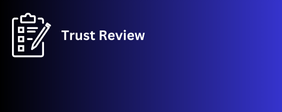FWD50 is an international govtech conference which, since 2017, has been bringing together global leaders working to innovate government from the inside and out. This year’s gathering in Ottawa featured Jennifer Pahlka (founder of Code for America), the Honourable Anita Anand (President of the Treasury Board for the Government of Canada), his Excellency Saeed Al Mulla (from the Department of Government Enablement in Abu Dhabi), and dozens more – including the Andrea Mills and Jamie Joyce from Internet Archive Canada and Internet Archive.
In their 90 minute workshop, Andrea and
Jamie demonstrated the power of using fresh mobile database AI not only to make each government document more accessible by improving metadata and the output of digitization efforts, but they also walked government officials through the possibilities of using AI to perform higher order government functions, like modeling deliberation, structuring policy, and creating more robust representations of constituent’s sentiments on policy issues.ee
Because the conference was occurring
at the same time as OpenAI’s DevDay, the use this amazon smart speaker to control workshop also included an overview of OpenAI’s new offerings, including the new possibilities with GPT4 Turbo. By showing off these new capabilities, both those recently announced by OpenAI and capabilities currently deployed at the Internet Archive and Internet Archive Canada, Andrea and Jamie invited participants to think big about how AI can transform their work in government.
“It is the only entity I’m aware of that
preserves the Internet’s scholarly and historical record at this scale,” Mann said.On a practical note, Mann leveraged information through
the Wayback Machine when he was researching how to set up a campus laptop loaner program for University of Redlands. This can be an essential service that libraries provide students who have trouble with their computers.
other universities, such as how they handled the consumer data return of damaged laptops. Looking at archived versions of university library websites through the Wayback Machine, Mann was able to learn about other approaches and find contacts to follow up for additional details.
